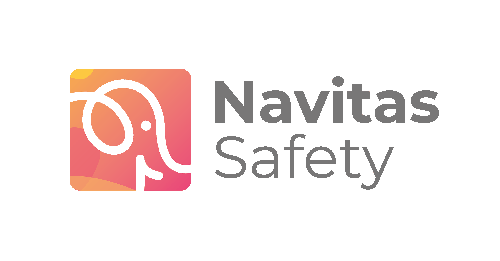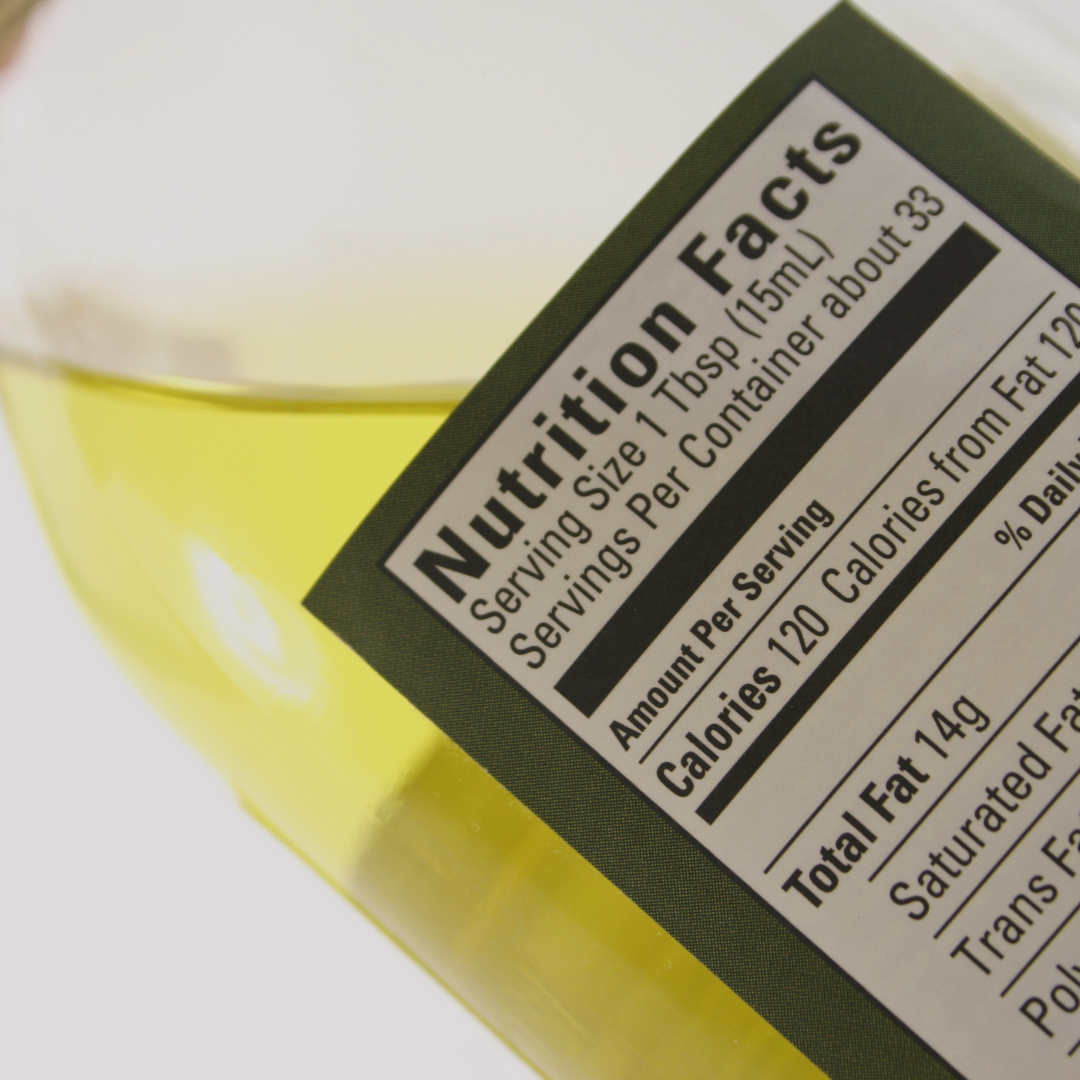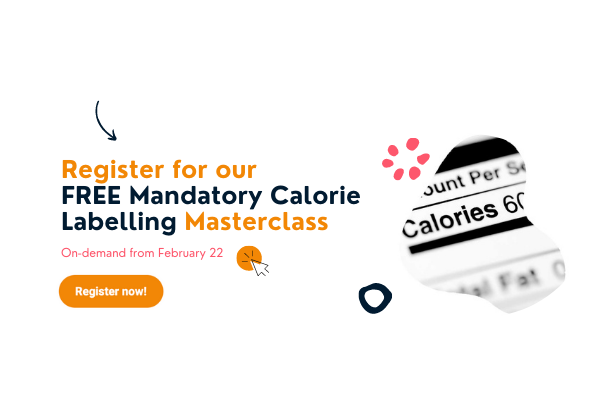A new mandatory calorie labelling requirement for food businesses will come into force on the 6th of April 2022.
Part of the government’s strategy to tackle obesity levels in England, the new law aims at helping customers make more informed food choices. Who does it apply to? What does it consist of? And most importantly, how to prepare?
We will go through all of these questions so that you can be ready and compliant when the new calorie labelling regulation officially starts in Spring.
Mandatory calorie labelling - who will be affected?
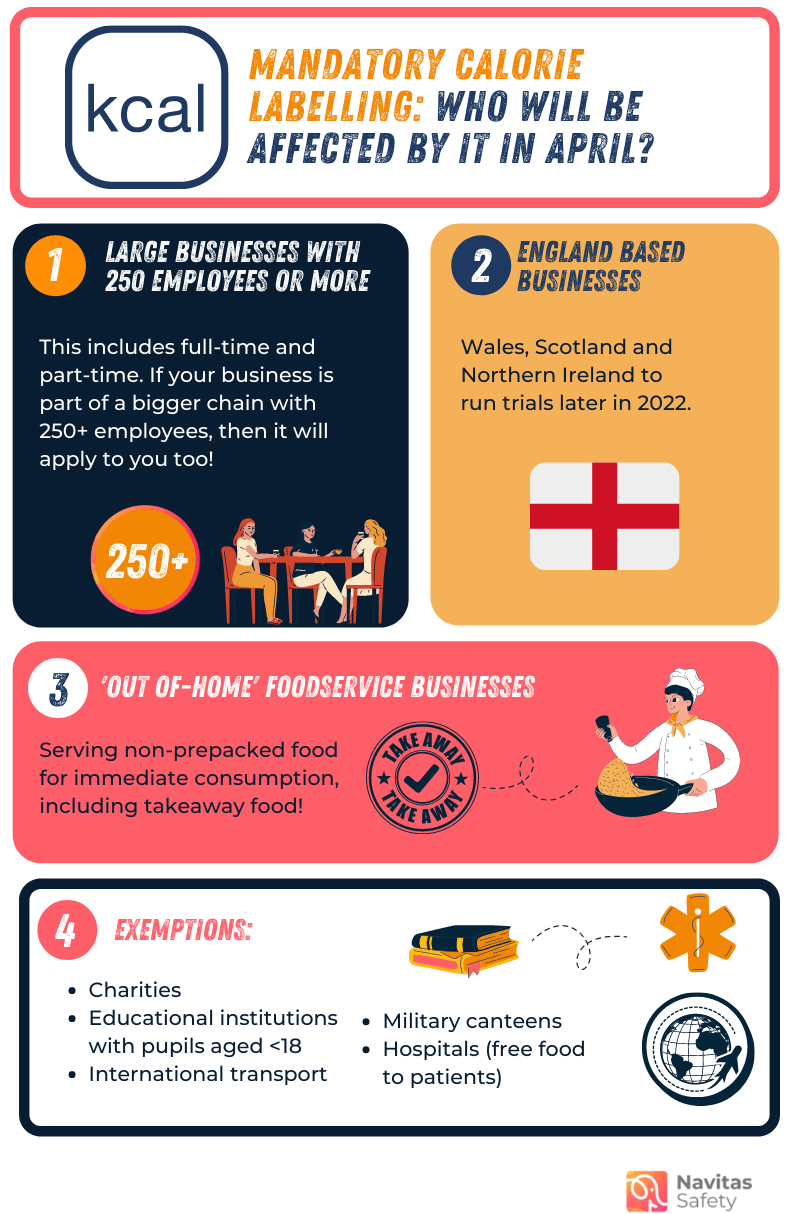
Large businesses with 250+ employees
Compulsory calorie labelling will be enforced for large ‘out-of-home’ food businesses with 250 or more employees first. This includes full-time and part-time employees. So if you manage a café which employs 15 staff members, you might still be required to comply with the new law if your business is part of a bigger chain with 250+ employees. In other words, numerous cafés, restaurants, takeaways, supermarkets, cinemas, department stores, caterers, universities and more will need to start displaying calorie information.
England-based businesses only to start
Initially, calorie labelling will only be required for foodservice businesses in England. Northern Ireland, Scotland and Wales are likely to run a trial later on in the year.
Takeaway and delivery apps
The law extends to food that is prepared on demand from online orders and sold on a website or mobile app, including third-party apps.
Contract caterers with 250+ employees
If food is provided by another organisation which employs 250+ employees, calorie labelling will be legally required. For example, a university organising graduation ceremonies with food provided by a contract caterer employing more than 250 employees. When it comes to education, only institutions with students or pupils aged 18+ would need to comply with compulsory calorie labelling.
Foodservice businesses exempt from mandatory calorie labelling
In addition to businesses with less than 250 employees, a few more could be exempt. This includes:
- Non-profit organisations and charities providing food;
- Educational institutions with pupils aged below 18;
- Hospitals but only for the food delivered to patients that is non-paid for;
- Military canteens;
- International transport (aircraft, train or ferry) to or from a country that isn’t part of the UK.
🚨 First checkpoint: If you reply yes, it’s likely that calorie labelling will apply to you:
- 250 or more employees (full-time + part-time) or
- <250 employees in one outlet, but the business is part of a chain with 250+ employees?
- 'Out-of-home’ food business?
- Based in England?
- You are not a school (pupils aged <18), charity, military canteen or hospital?
What type of food will require mandatory calorie labelling practices?
‘Out-of-home’ food
First let’s start with the ‘out of home’ criteria. This refers to food prepared and ready for immediate consumption by customers, on or off premises. For instance, restaurant food to be eaten at the premises or as takeaway. So it doesn’t include food made at home. Therefore, while takeaway food is consumed ‘at home’, it is prepared ‘out-of-home’ and so is affected by this new calorie labelling law.
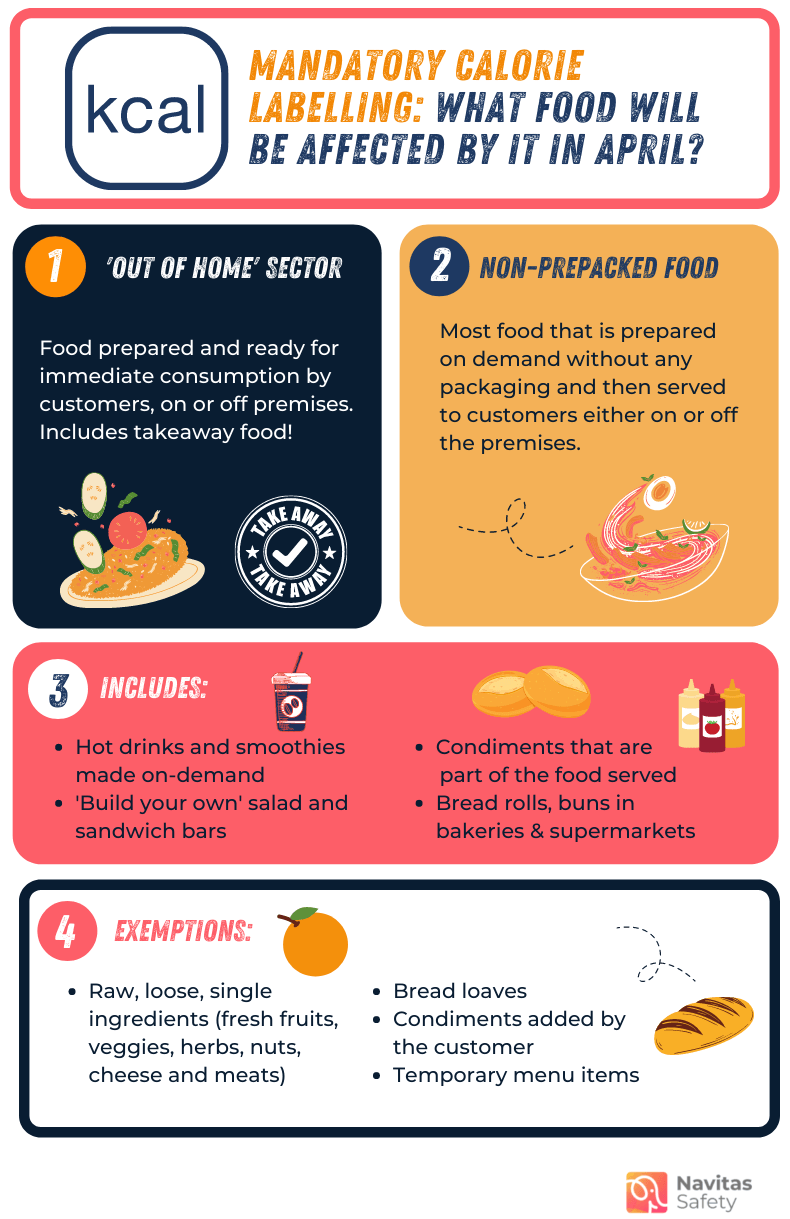
Non-prepacked food only for mandatory calorie labels
The new regulation targets non-prepacked food only, which at the moment often lacks nutritional labels. Mainly, this corresponds to food that is prepared on demand without any packaging and then served to customers either on or off the premises. It also includes hot drinks such as coffees from cafés (provided that they hit the 250+ employee requirement of course!). Actually, even the ‘build your own’ sandwich or salad bars! It is also worth noting that supermarkets’ fresh food such as pies, buns, rolls etc. will also likely need to comply with compulsory nutritional labels.
Food exemptions for calorie labelling regulations
Raw, loose, unprocessed ingredients
Loose, raw, single and/or unprocessed ingredients such as seeds, nuts, herbs, fresh fruits and vegetables are exempt – as long as they are not added to something else. So, while a loose apple doesn’t require a calorie label, an apple, as part of a fruit salad does. Another example is a loose banana in an office canteen which doesn’t need a label but the cafeteria’s fruit salad with bananas will require clear calorie information.
Similarly, fish, meat and cheese will be exempt too as long as they are used as single ingredients and not added to any other food. So smoked salmon won’t need a label, but a supermarket’s sushi bar using salmon will do.
Finally, let’s talk about bread. While bread loaves are exempt, rolls and buns require a calorie label… Confused? Don’t worry, we will share tips on how best to organise at the end of this blog. So keep reading! 😊
Temporary menus
Any food that is only temporarily offered on a menu (less than 30 consecutive days) won’t require calorie labels. This notable exemption should relieve a bit of operational pressure for restaurants and cafés!
Extra ingredients requested by customers
When a customer asks for extra sauce, cheese or onions for example, this wouldn’t require a new calorie label. But only if it wasn’t a menu option initially! In other words, if your menu includes an ‘add extra cheese’ option, then this will require a calorie label (e.g. 30 kcal per slice of cheese). However, if the item requested isn’t on the menu, then it would be an exemption. A good example could be a customer asking for olive oil instead of butter in their dish – an option potentially not officially displayed on your menu.
Condiments - do they need a calorie label?
Condiments count and require proper calorie information on labels or on menus when they are part of a dish or food served to the customer. However, condiments that are added by the customer are exempt.
🚨 Second checkpoint: what food will be affected by mandatory calorie labelling?
- Non-prepacked food prepared for immediate consumption on or off premises;
- Includes takeaway food made on demand;
- ‘Build your own’ salad bars or similar concepts;
- Hot/cold beverages made on demand (smoothies, coffees);
- Condiments that are part of the food served.
What and where to display calorie information?
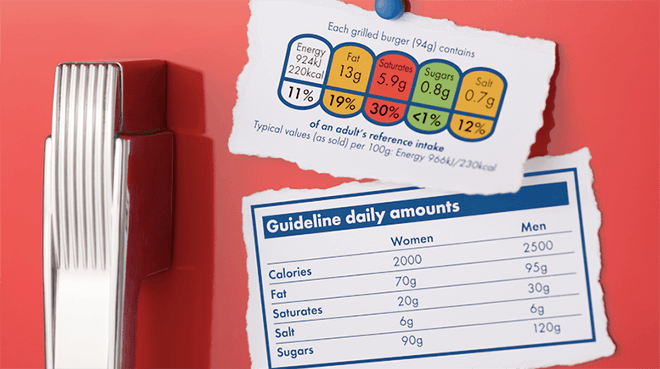
Where to display nutritional details?
Foodservice businesses affected by the new calorie labelling law are required to display calorie information on all non-prepacked food and soft drinks. All calorie labels or stickers must be clearly displayed at the point of choice for customers such as physical and online menus, including delivery platforms.
In addition, if food is sold by phone, businesses must ensure that all calorie information is made clearly available for the customer – on the phone and upon delivery with the aid of clear labels/stickers. Alternatively, add one of your calorie-labelled menus in the takeaway packaging!
What information must be displayed?
Let’s dive into the requirements for calorie labels required from April 2022 and the information that you must display:
First, you must clearly label the food’s energy content in kilocalories (kcal) with the associated portion. For example:
- 250 kcal for 100g;
- 357 kcal per slice of cake;
- 850 kcal for the cheeseboard, serves 3 people;
- 120 kcal per 100g scoop of pasta;
- 168 kcal per 25g standard serving of almonds.
In addition, you must add the statement that “an adult requires on average 2,000 calories a day” to serve as guidance for customers to make more informed choices.
🚨 Third checkpoint: what will be legally required in terms of calorie labelling?
- Starting 6th of April 2022;
- Only for non pre-packed food;
- Must showcase calorie information at the point of choice for the customer;
- Must display the food energy content in kcal per portion;
- Add a guidance statement: "An adult needs an average of 2,000 kcal per day".
Why and how is mandatory calorie labelling being implemented?
The purpose behind mandatory calorie labelling
Obesity has reached record levels in the UK as ¾ of the population aged 45-74 is overweight or obese. In addition, almost 10% of children are obese in England. The government is therefore implementing new measures to help customers make more informed and healthier choices. This is also to bridge the gap between packed and non-prepacked food. Indeed, most non-prepacked foods currently do not display any nutritional information, making it difficult for customers to make informed choices as opposed to a pre-packed sandwich with detailed nutritional information.
The enforcement of compulsory calorie labels
From the 6th of April 2022, Environmental Health Officers (EHOs) will check your compliance with calorie labelling (if applicable) during their regular inspections. So, keep in mind that your EHO will look at:
- Compliance with calorie label requirements (energy content + guidance statement + associated portion);
- Where it is displayed (point of choice);
- How it is done – label/sticker/menus;
- The methods you used to calculate the calorie content to make sure it’s appropriate.
As it is a legal requirement, penalties will happen in case of non-compliance with the new mandatory calorie labelling regulations. You could be facing a civil offence and sanction under the Regulatory and Sanctions Act 2008 as well as a monetary penalty of £2,500.
🚨 Fourth checkpoint: About the purpose and enforcement of calorie labels
- Here to help customers make healthier, more informed choices;
- To catch up with label requirements already in place for pre-packed food;
- You could be fined £2,500 for non-compliance.
How can Navitas Safety help you with calorie labelling?
Helping you become EHO-ready at all times
Our lovely experts are here to help you be ready at all times for your next EHO visit. If mandatory calorie labelling sounds a little bit confusing for you, get in touch with us.
Alternatively, sign up for our FREE webinar where you can learn more about this new requirement!
Digital checklists, allergen labelling and a robust food safety software
Navitas Safety is all about switching to digital processes. This means no paperwork and instead, easy digital records and checklists. You might need to include calorie labels as a part of a new safety checklist for your business. Ditch paper sheets and go digital! You’ll be able to visualise all checklists and safety tasks within a glance. Anything late or due for check will be flagged out! Don’t wait to get compliant – explore more about our food safety software capabilities here.
